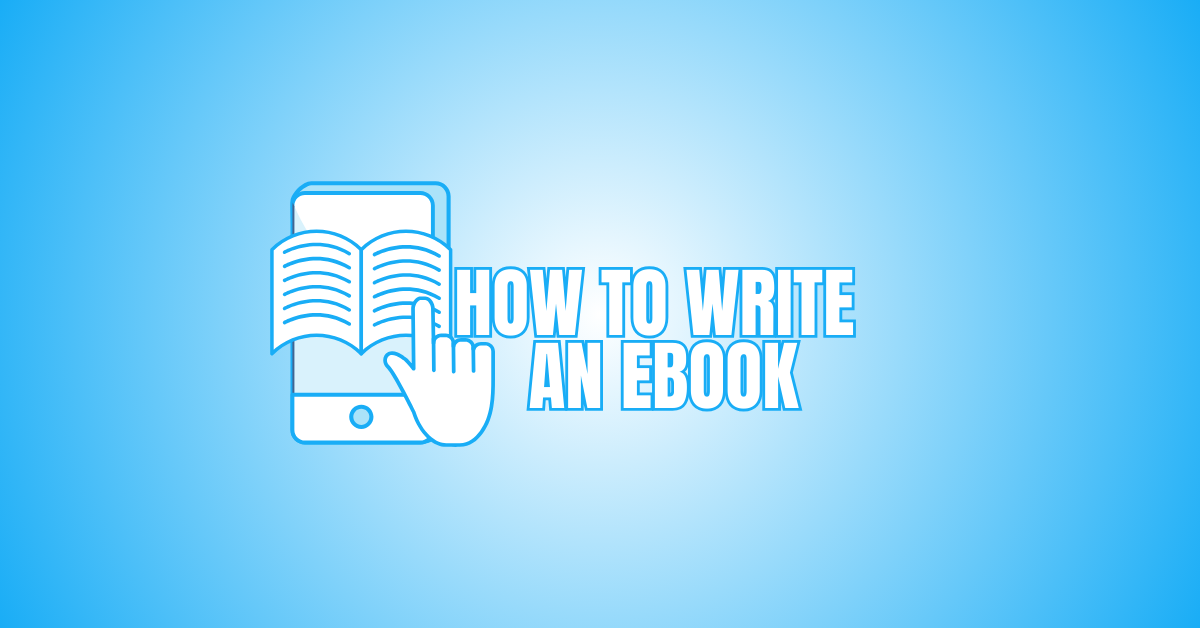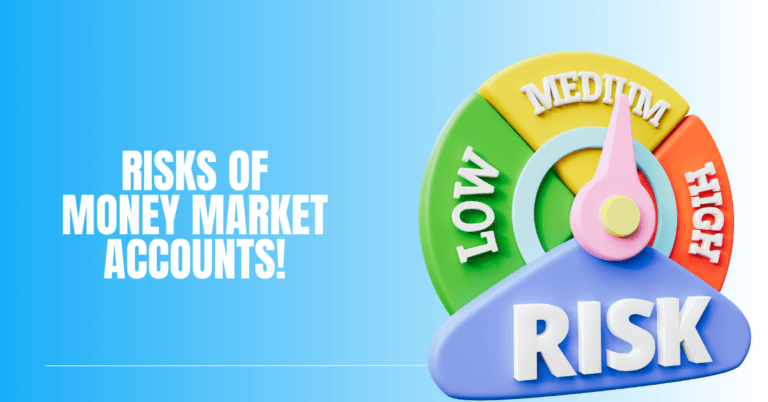How To Write An eBook That People Actually Want To Read
One of the greatest methods to spread your information, establish your authority, and even generate passive revenue is to write an eBook.
Regardless of your background—blogging, entrepreneurship, or just a general interest—an eBook enables you to condense your knowledge into a helpful tool that others may use. But how exactly do you go from an idea to a polished, published eBook?
This eBook writing tutorial offers detailed guidelines to help you transform your ideas into a polished, expertly written, and captivating digital book.
How To Write An eBook: 15 Easy Steps
Step 1: Choose Your eBook Topic
Selecting the right topic is the most crucial step in writing an eBook. A strong topic should be both meaningful to you and valuable to your audience.
Begin by considering areas where you have expertise, experience, or a deep interest. Think about the most common questions people ask within your niche and identify problems your readers want solutions for.
Look for gaps in the market where information is lacking or where you can present a unique perspective. Balancing your passion with audience demand ensures your eBook is both enjoyable to write and highly impactful.
Pro Tip
Use platforms like Quora, Reddit, or niche forums to uncover trending questions and unmet reader needs.
Step 2: Define Your Target Audience
Knowing your readers is essential because your eBook should speak directly to their needs and challenges. The tone, style, and material may be tailored to your target audience if you know who they are.
Consider factors such as age, profession, background knowledge, and interests when shaping your writing. Identify the main problem they’re facing and ensure your eBook provides practical solutions.
For instance, beginners in digital marketing require simple, jargon-free guidance, while professionals exploring advanced SEO strategies will appreciate technical depth and detailed analysis. Aligning your writing with reader expectations makes your eBook more relevant, engaging, and effective.
Pro Tip
Create a reader persona that outlines demographics, goals, and pain points to keep your content highly focused and relatable.
Step 3: Set Clear Goals for Your eBook
Understanding your goals is essential when learning how to write an eBook, as they determine your content, marketing strategy, and whether it educates, builds your audience, or generates income.
How you present your content depends on your goals: educating readers, increasing your email list, drawing them to your website, or making money.
For example, a free eBook is a powerful lead magnet for building an email list or increasing brand visibility. On the other hand, if your primary aim is income, your eBook should deliver exclusive, premium insights that justify a price tag.
Having clarity on goals ensures your writing is purposeful, your marketing is strategic, and your results are measurable.
Pro Tip
Clearly define one main goal before writing; this keeps your eBook focused and aligned with your overall strategy.
Step 4: Research And Outline Your Content
An outline serves as the blueprint for your eBook, helping you organize ideas and maintain flow. Without it, writing can quickly become overwhelming and unstructured.
Start by researching credible sources, statistics, and case studies to support your content. Then, organize your ideas into logical sections and subtopics that guide the reader step by step.
A solid structure typically includes an introduction, chapters, case studies or examples, actionable steps, and a firm conclusion.
For instance, a freelance business eBook might cover topics like finding a niche, building a portfolio, and attracting clients in clear, progressive chapters.
Pro Tip
Drafting a detailed outline keeps your writing focused, ensures balanced coverage of each section, and saves significant editing time later.
Step 5: Start Writing Your eBook
Writing is the core of your eBook creation process, and approaching it with the right mindset makes all the difference. Keep your tone conversational and reader-friendly, avoiding heavy jargon that may confuse or disengage your audience.
Consistency is key—set realistic writing goals, such as 1,000 words a day, to maintain steady progress. Break content into short paragraphs for better readability on digital screens. Strengthen your writing with real-life stories, examples, and case studies that connect with readers.
End each chapter with actionable steps, giving readers a way to apply what they’ve learned immediately, making your eBook more practical and valuable.
Pro Tip
Focus on writing freely during your first draft without editing too much; polishing and refining can always come later.

Step 6: Edit And Proofread
Editing is the stage where your eBook evolves from a simple draft into a polished, professional piece. Start with a first round focused on clarity, structure, and overall flow, ensuring your ideas connect smoothly.
The second round should target grammar, punctuation, and spelling to eliminate distracting errors. In the third round, refine formatting, tone, and consistency, so your writing feels cohesive and polished.
Helpful tools like Grammarly, Hemingway Editor, and ProWritingAid can streamline the process, but for the highest quality, hiring a professional editor is an excellent investment that ensures your eBook meets publishing standards.
Pro Tip
Approach editing in multiple rounds with fresh eyes; stepping away before revising helps you spot errors more effectively.
Step 7: Design And Formatting
Understanding design and formatting is an essential step in learning how to write an eBook, ensuring your content looks professional, readable, and visually engaging for your readers.
Start by choosing readable fonts like Arial, Times New Roman, or Calibri to ensure comfort for digital readers. Use distinct headings and subheadings to arrange your text so that it is easy to read.
Enhance engagement by adding visuals such as charts, infographics, or images that support your key points. Maintain a consistent style with uniform colours, font sizes, and spacing throughout the book.
For DIY projects, tools like Canva, Visme, and Adobe InDesign make professional design accessible and straightforward.
Pro Tip
Use a style guide for fonts, colours, and spacing to maintain a polished, cohesive look throughout your eBook.
Wealthy Affiliate – Mini Review (2025)
If you’ve ever thought about turning your blog, passion, or niche into an online business,
Wealthy Affiliate (WA) is one of the most beginner-friendly platforms I’ve used.
It combines step-by-step training, website hosting, SEO research tools,
and an active community all in one place.
What I like most: you can start free (no credit card needed),
explore lessons, test the tools, and connect with other entrepreneurs
before upgrading. WA isn’t a “get rich quick” scheme — it’s a platform where success comes
from consistent effort and applying what you learn.
Step 8: Create A Compelling Title And Cover
The title and cover of your eBook must draw readers in and communicate value because these are the first things they will see.
A strong title should be clear, specific, and benefit-driven, showing precisely what readers will gain, while remaining memorable and catchy.
The cover should feature bold, readable typography and simple, professional graphics that align with your brand style. A well-designed cover enhances credibility and encourages potential readers to click or buy.
If design isn’t your strength, hiring a freelancer from platforms like Fiverr or Upwork can ensure a professional and eye-catching presentation.
Pro Tip
Test multiple titles and cover options with your audience or peers to see which combination generates the most interest and engagement.
Step 9: Format For Different Platforms
Formatting your eBook for many platforms is essential if you want to reach a large audience. PDFs work well for free downloads or lead magnets, providing easy access across devices.
EPUB is the standard format for eReaders like Apple Books, ensuring proper display and navigation. MOBI files are compatible with Amazon Kindle, the world’s most popular eReader, making them essential for Kindle publishing.
Converting your eBook into these formats ensures readers can access it on their preferred devices. Tools like Calibre and Scrivener simplify the process, allowing you to create professional, platform-ready files efficiently.
Pro Tip
Always preview your eBook on different devices to ensure formatting, fonts, and images appear correctly before publishing.
Step 10: Set The Right Price
Setting the right price for your eBook is both an art and a strategy. Your pricing should align with your ultimate goal, whether that’s generating leads, earning passive income, or establishing authority in your niche.
For lead magnets, keeping your eBook free or under $2.99 encourages more downloads. For passive income, Amazon’s sweet spot is between $2.99 and $9.99, where you also qualify for a 70% royalty.
If you’re offering a premium, niche-specific resource, you can charge $19.99 or more. Don’t hesitate to experiment with pricing and adjust based on audience response and sales performance.
Pro Tip
Test different price points during promotions; this reveals the balance between value perception and sales volume, helping you maximize both profits and readership.
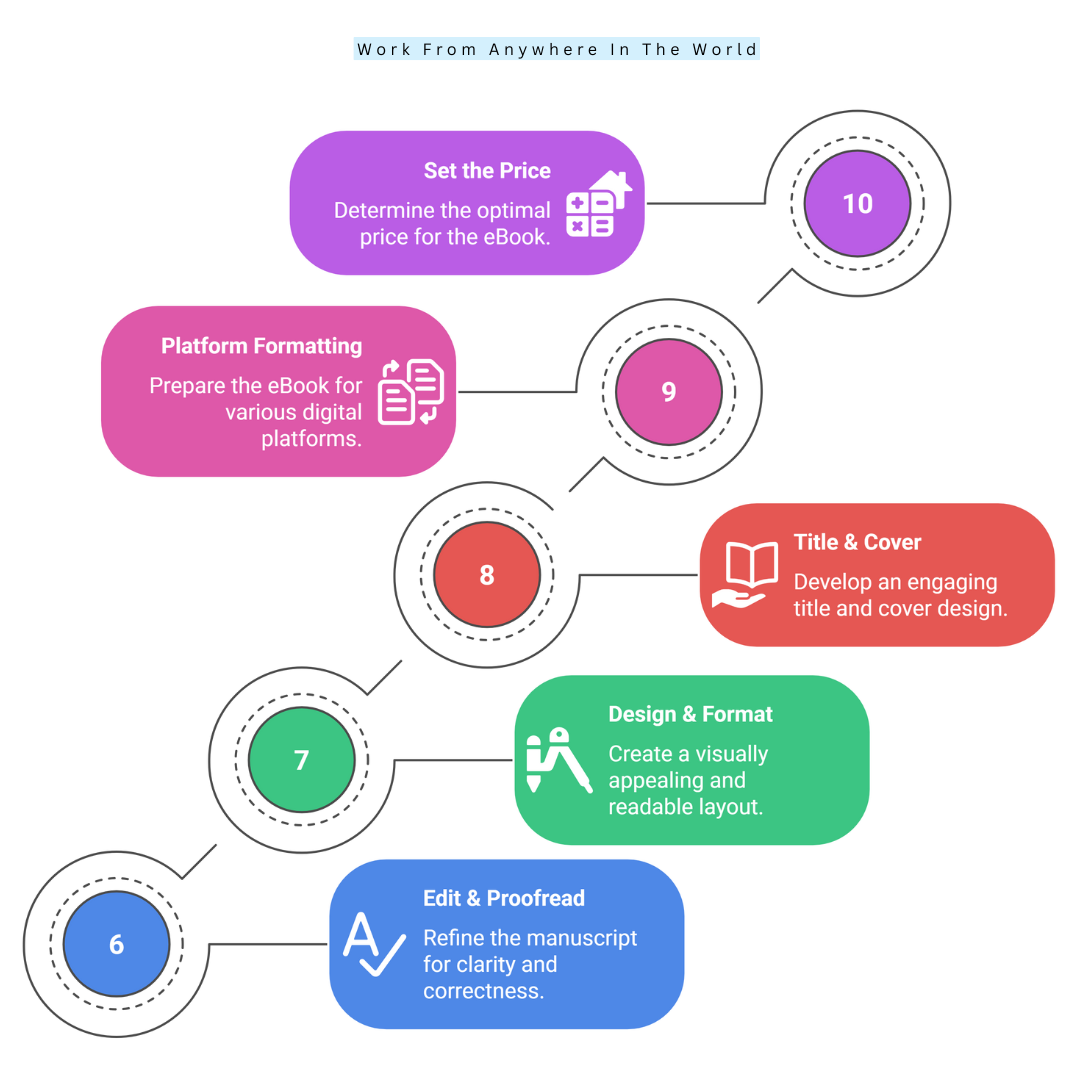
Step 11: Publish Your eBook
Knowing how to write an eBook includes understanding the best publishing options, whether through self-publishing platforms or directly on your website, to reach your target audience effectively.
Platforms like Amazon Kindle Direct Publishing (KDP) give access to millions of Kindle readers, while Apple Books caters to iOS users.
Services like Smashwords or Draft2Digital allow you to distribute your eBook to multiple stores simultaneously, expanding reach effortlessly. A
Alternatively, you can sell or offer your eBook directly on your website using platforms such as Gumroad, Payhip, or Shopify.
Offering a free download can help grow your email list, while paid versions generate revenue, giving you flexibility based on your goals.
Pro Tip
Choose the publishing method that aligns with your primary goal—whether maximizing reach, building an email list, or generating income.
Step 12: Market Your eBook
Learning how to write an eBook also involves repurposing its content into blogs, social media posts, videos, or infographics to extend reach and maximize engagement.
Leverage social media by sharing quotes, visuals, and snippets to spark interest. Use email marketing to provide exclusive content and promotions directly to your subscribers.
Building credibility and drawing in new audiences are two benefits of guest posting on well-known websites in your area. In addition to advertising your eBook, podcast interviews let you demonstrate your expertise.
Paid advertising helps you target specific populations on social media platforms like Facebook and Instagram who are most likely to engage with your content.
Combining multiple strategies increases visibility, engagement, and sales potential for your eBook.
Pro Tip
Create a specific landing page with compelling writing, endorsements, and obvious calls to action to turn browsers into readers successfully.
Step 13: Gather Feedback And Update
After publishing your eBook, collecting feedback from readers is essential for improvement and long-term relevance. Reviews and comments highlight areas that may need clarification, additional examples, or expanded content.
Constructive criticism helps you understand how your audience interacts with your material, revealing gaps or sections that could be strengthened.
Regularly updating your eBook based on this input keeps it current, accurate, and valuable, enhancing reader satisfaction.
Paying attention to your audience may improve the credibility of your work while also fostering reader loyalty and trust, which promotes referrals and repeat interaction.
Pro Tip
Encourage readers to leave feedback and consider creating a revision schedule to keep your eBook updated and relevant over time.
Step 14: Repurpose Your eBook
Repurposing your eBook content allows you to maximize its value and reach a wider audience. Chapters can be transformed into blog posts, providing fresh content for your website and improving SEO.
Key insights or quotes can be shared as LinkedIn or Twitter posts to engage social media followers. You can also convert chapters into YouTube videos or podcast episodes, appealing to audiences who prefer audio or visual formats.
Infographics highlighting essential points make complex information easy to digest and share. Repurposing not only increases visibility but also drives traffic back to your eBook, boosting readership and impact.
Pro Tip
Plan a repurposing strategy before publishing to efficiently create multiple content types from your eBook and maintain consistent messaging.
Step 15: Keep Updating Your eBook
An eBook is not a one-time creation—it should evolve as your niche, industry, or audience needs change. Regular updates ensure your content stays relevant, accurate, and valuable. Outdated information can harm your credibility, while refreshed content positions you as a trusted authority.
Updates can include adding new examples, revising outdated statistics, or inserting additional resources. Consider releasing a second edition or a bonus chapter to provide extra value.
Not only will this improve reader trust, but it can also boost sales by giving readers a reason to purchase the updated version. Evergreen books that evolve remain powerful long-term assets.
Pro Tip
Schedule yearly reviews of your eBook content to identify outdated sections, refresh links, and add timely insights that keep readers engaged and returning.
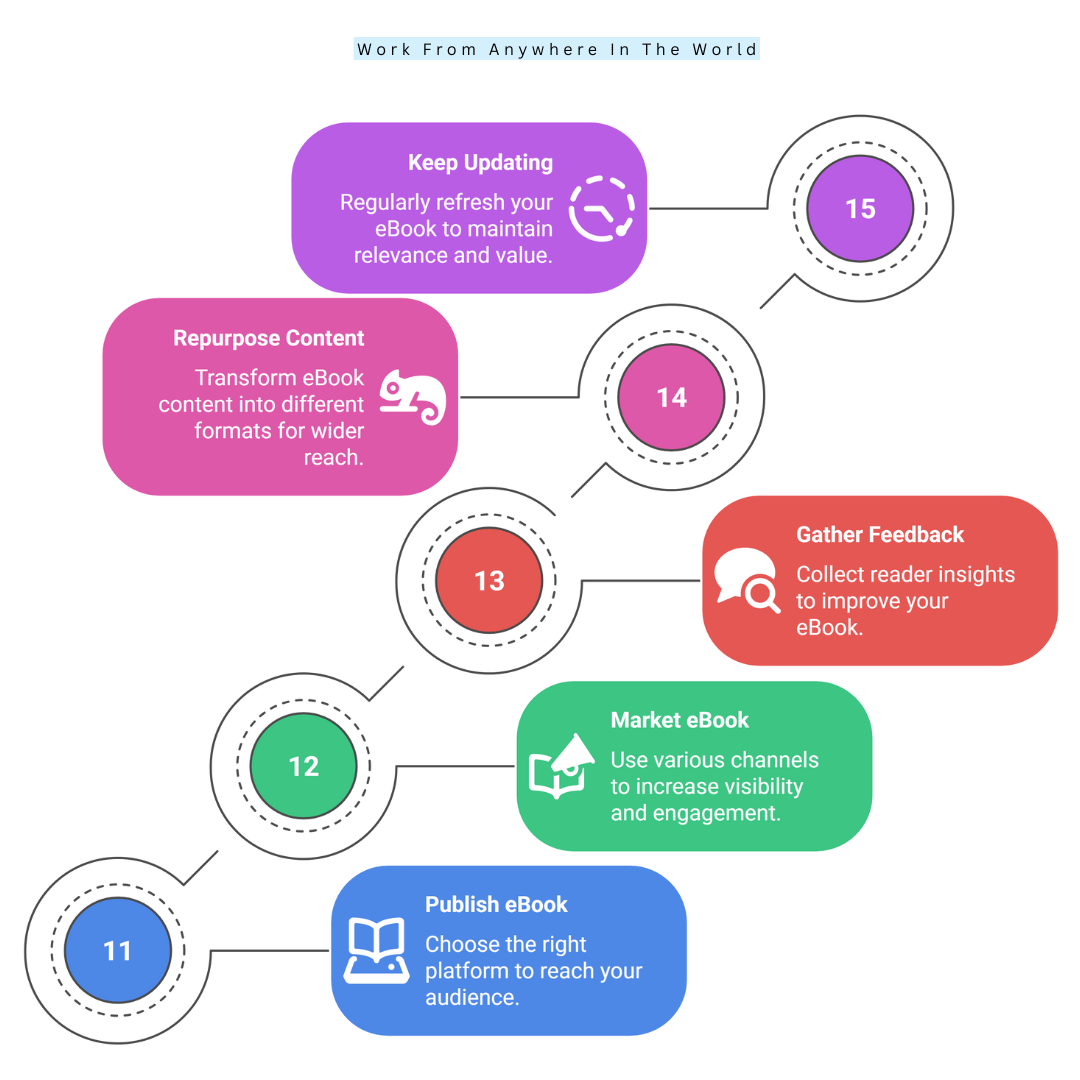
Common Errors to Steer Clear of When Composing an eBook
The process of writing an eBook can be thrilling and fulfilling, but there are a few things that might go wrong and keep your work from reaching its most significant potential.
By identifying and eliminating these errors, you may create an eBook that is successful, captivating, and of excellent quality.
1. Choosing A Topic With No Audience Interest
Selecting a topic solely based on your interest without considering audience demand is one of the biggest mistakes authors make.
Even if the content is excellent, if no one is searching for or needs that information, your eBook will struggle to attract readers.
Before choosing a topic, research your niche thoroughly. Use tools like Google Trends, Quora, or social media groups to identify trending topics and recurring questions.
A topic that balances your expertise with audience demand ensures your eBook solves real problems and appeals to a target market.
2. Skipping Editing And Proofreading
Publishing without proper editing and proofreading is a critical error. Errors in grammar, spelling, punctuation, or sentence structure can make your eBook look unprofessional and diminish credibility.
Readers are quick to judge content quality based on these mistakes. Multiple rounds of editing are necessary: first for clarity and structure, then for grammar and spelling, and finally for formatting and consistency.
Consider using tools like Grammarly, Hemingway Editor, or ProWritingAid, and hiring a professional editor. Well-edited content enhances readability, builds trust, and ensures your ideas are communicated effectively.
3. Overloading With Text And No Visuals
A text-heavy eBook can overwhelm readers, especially those reading on digital devices. Long paragraphs without headings, bullet points, images, or infographics make it challenging to follow and retain information.
Visual components enhance understanding and serve to reinforce essential ideas in addition to breaking up text. Use charts, tables, diagrams, or images to illustrate complex points.
Incorporating visuals enhances engagement, makes your eBook more attractive, and helps readers absorb information more efficiently, increasing overall satisfaction and value.
4. Making the eBook Too Long or Too Short
Finding the correct length for your eBook is essential. Too short, and it may feel incomplete or lacking in value; too long, and it may discourage readers from finishing it.
The ideal length depends on your topic, audience, and purpose. Focus on delivering concise, actionable, and valuable information without unnecessary fluff.
Each chapter should cover a specific idea in depth while keeping the reader’s attention. Balance quality and quantity to ensure your eBook provides meaningful insights while remaining readable and accessible.
5. Weak Marketing Efforts After Publishing
Even the best eBook will not succeed without a solid marketing strategy. Many authors make the mistake of believing that publishing alone will generate sales or downloads.
Promoting your eBook is critical—use social media, email marketing, guest blogging, podcast interviews, and paid advertising to reach your audience. Create a compelling landing page with clear calls-to-action and persuasive copy.
Engaging in consistent promotion ensures your eBook reaches the right readers, drives traffic, and fulfills your goals, whether that’s generating income, building authority, or growing your email list.
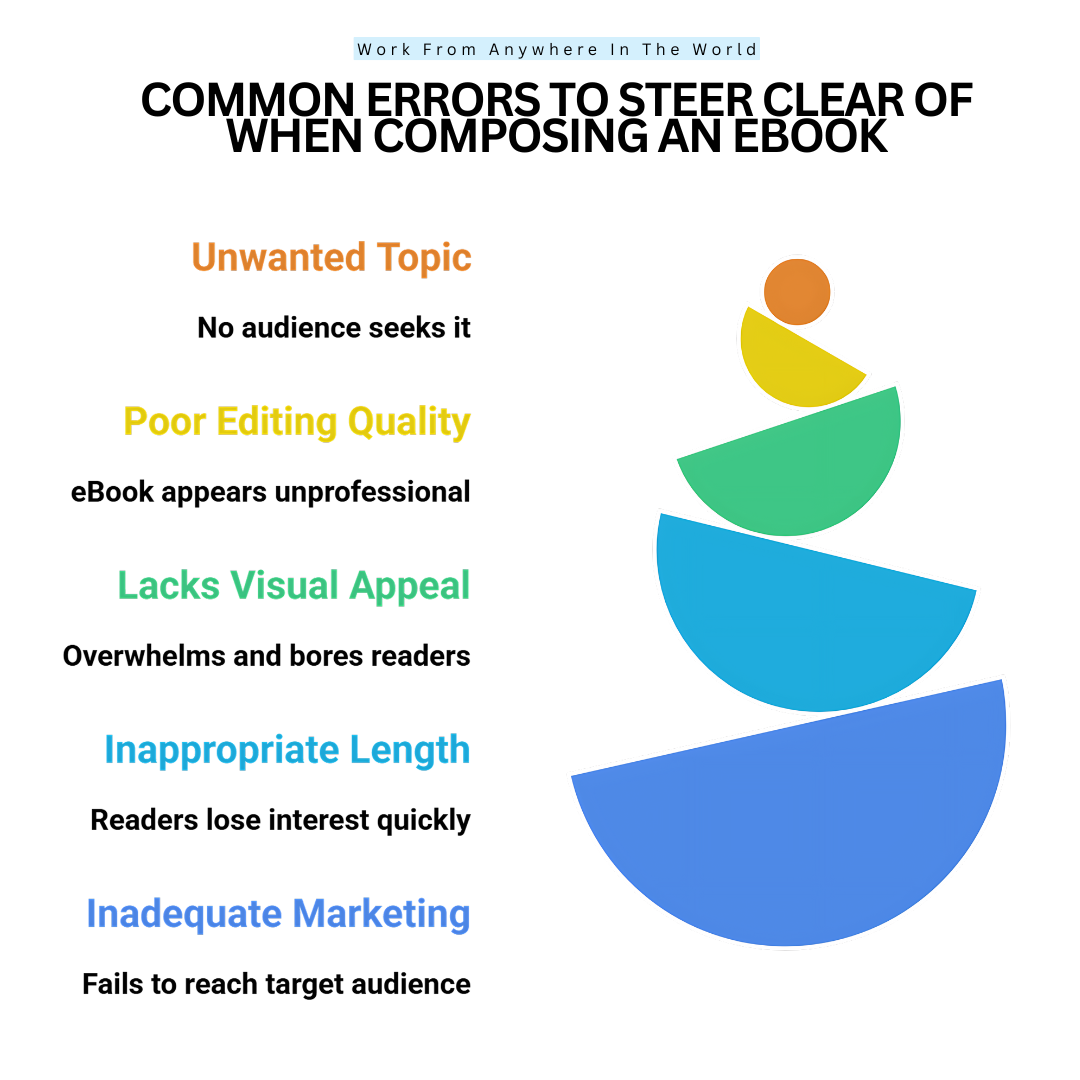
Conclusion
Mastering how to write an eBook ensures you create a professional, engaging, and impactful resource that educates readers, builds authority, and enhances your brand’s reach and credibility.
By carefully choosing a topic, understanding your readers, creating a clear structure, writing consistently, and promoting effectively, you can produce a valuable, engaging, and professional eBook.
Avoid common mistakes, edit thoroughly, and repurpose content to maximize impact. With dedication and strategy, your eBook can educate, inspire, and even generate income, becoming a lasting resource that strengthens your brand and expands your reach.
I trust you enjoyed this article on How To Write An eBook That People Actually Want To Read. Please stay tuned for more insightful blogs on affiliate marketing, online business, and working from anywhere in the world.
Take care!
— JeannetteZ
💬 Your Opinion Is Important To Me
Do you have thoughts, ideas, or questions? I’d love to hear from you. Please leave your comments below or email me directly at Jeannette@WorkFromAnywhereInTheWorld.com.
📚 More Work From Anywhere Reads
🚀 Ready to Build a Business You Can Run from Home
or from Anywhere in the World?
Imagine creating income on your terms — from home, a cozy café, or wherever life takes you.
With the right tools, training, and community support, it’s entirely possible.
Start your own online business for free — no credit card needed.
Disclosure
This post may contain affiliate links. As an Amazon Associate and participant in other affiliate programs, I earn from qualifying purchases at no extra cost to you. Please read my full affiliate disclosure.

